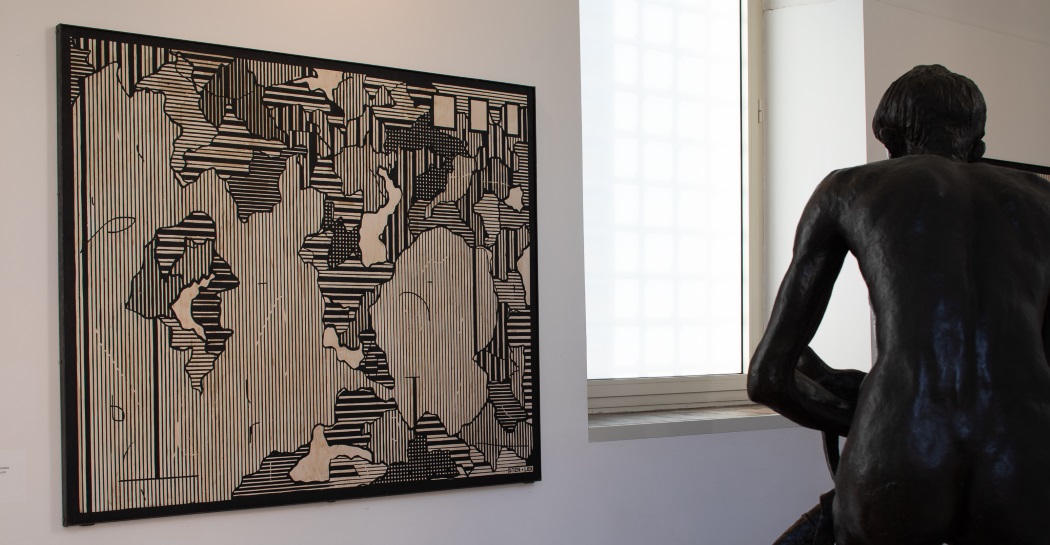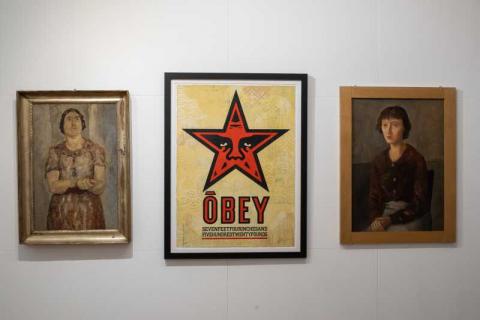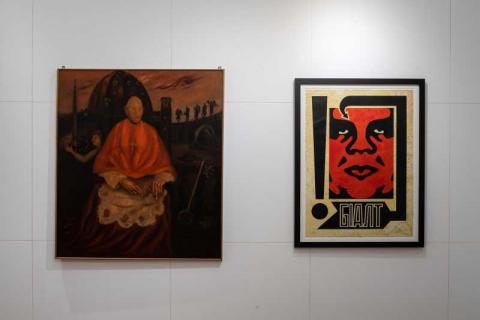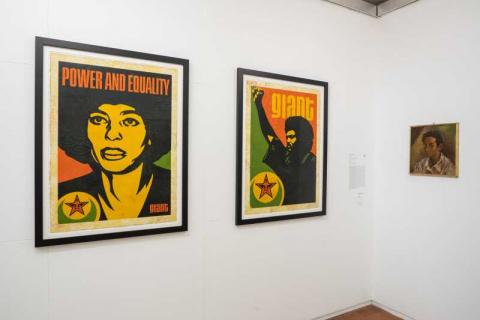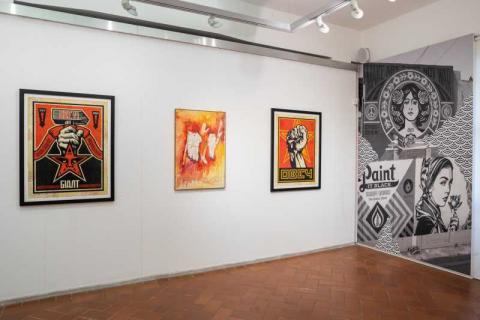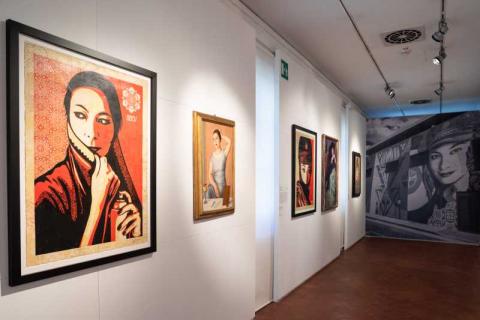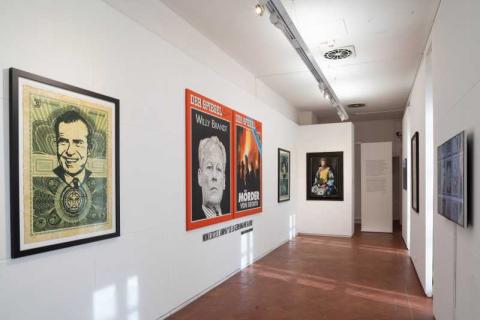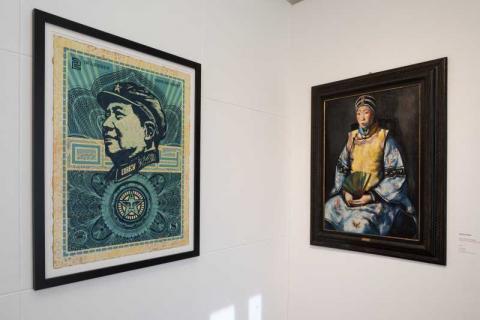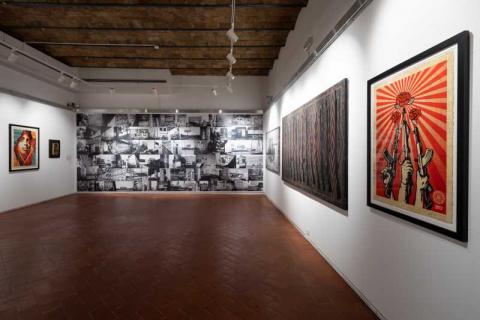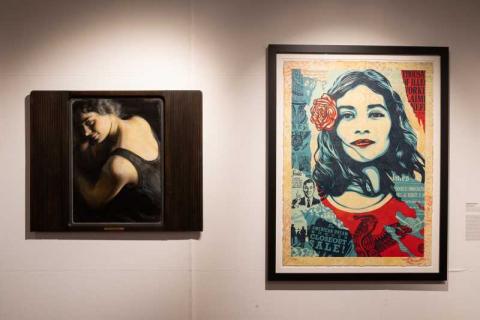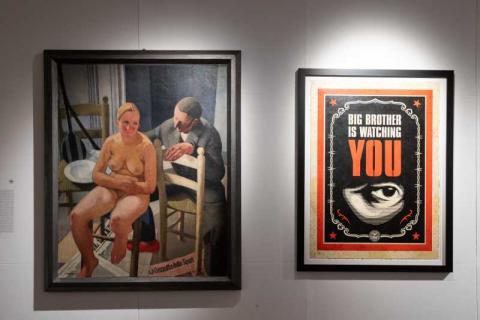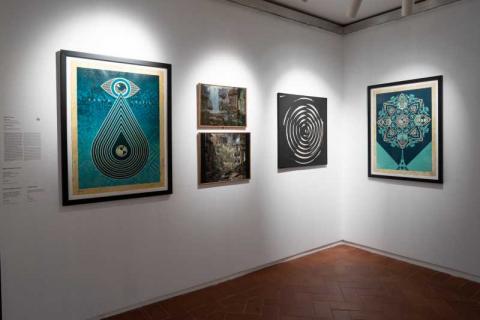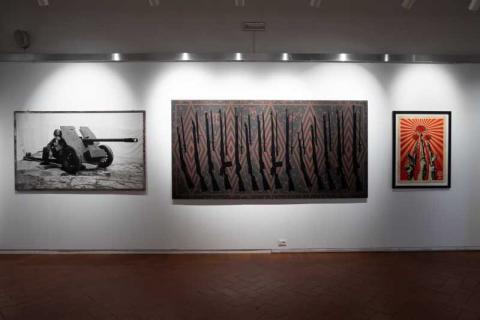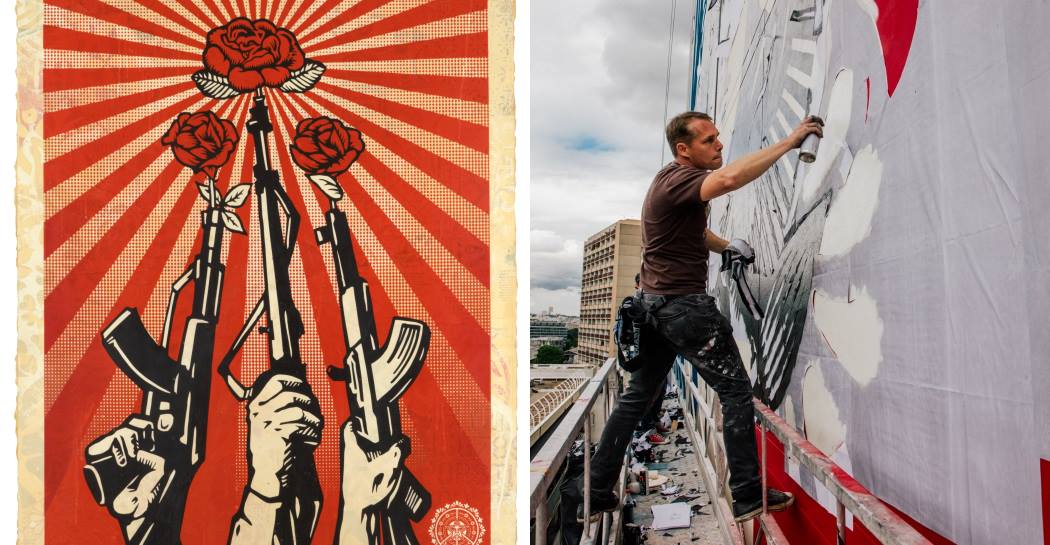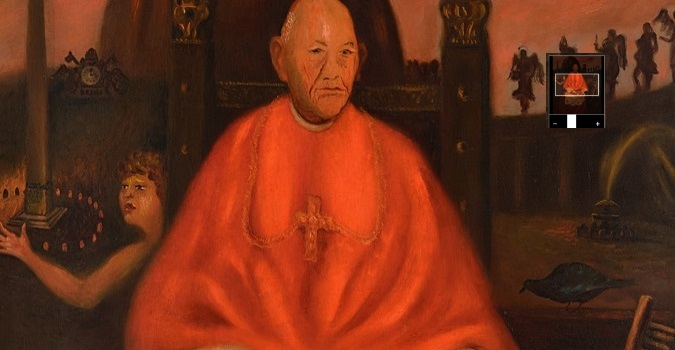Shepard Fairey. 3 decades of dissent
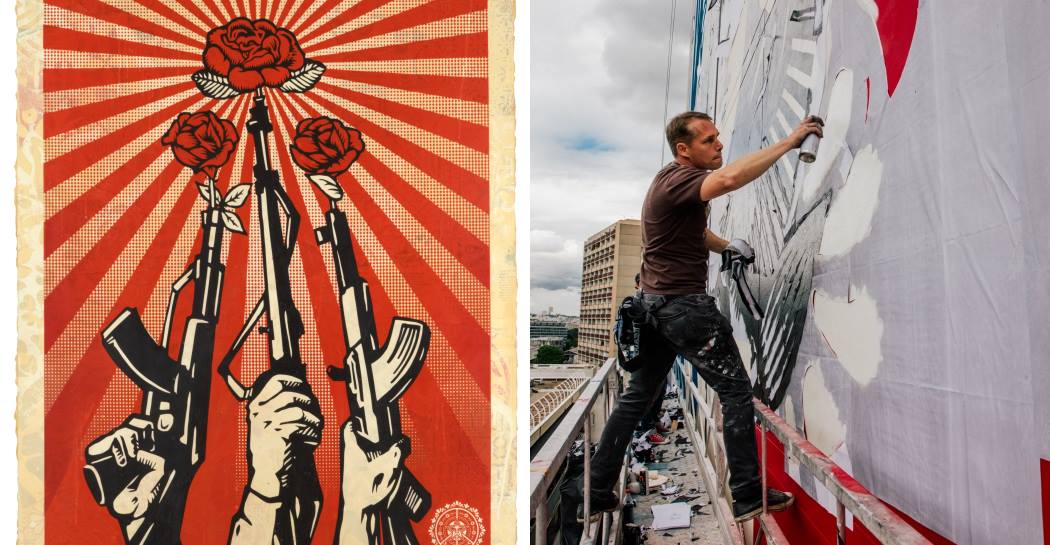
SHEPARD FAIREY / 3 DECADES OF DISSENT, an exclusive exhibition curated by Shepard Fairey himself, one of the most renowned urban artists in the world, in collaboration with Claudio Crescentini, Federica Pirani and the Wunderkammern gallery.
An extreme experimenter of language, styles and political messages through art, the American artist Shephard Fairey (Charleston, 1970), wished to create a unique and unrepeatable concept specifically for the Gallery of Modern Art, by presenting a unitary core of thirty of his recent unpublished graphic works (2019) – in which he revisits many of his themes of dissent, such as the fight for peace and against racial violence, the defence of human and gender dignity, the protection of the environment – in a dialogue with important works of the contemporary art collection of the Capitoline Superintendence.
Entrance to the exhibition is free with an MIC and is promoted by Roma Capitale, the Office for the Promotion of Culture, the Capitoline Superintendence for Cultural Heritage and the Wunderkammern gallery. It is organized in collaboration with Zètema Progetto Cultura.
It is to be accompanied by a catalogue edited by Silvana Editoriale, with contributions from Maria Vittoria Marini Clarelli, Claudio Crescentini, Federica Pirani, Arianna Angelelli together with Daniela Vasta and the Wunderkammern gallery.
The project is part of Romarama, a program of cultural events promoted by Roma Capitale.
Opening the exhibition is an artwork that envelopes the time-frame of the three decades of dissent: an autographed copy of HOPE (2008), one of Shepard Fairey's most famous works, in which the artist redefines the face of Barack Obama, creating the iconic image that has travelled the world over, a symbol of the first politician of African American descent to hold the office of U.S.A. President. Obama himself, in a letter to Fairey later made public, congratulated the artist directly.
The artist has always defined his style as being political, bold and iconic and, based on the stylization and idealization of images, as other works on display, such as the reworking of the famed sticker campaign entitled “André the Giant Has a Posse”, with the face of the wrestling champion planted on thousands of walls in American cities. “André the Giant”, in the HENDRIX version, will be exhibited together with JESSE – with the face of Reverend Jesse Jackson – from the “Brown Power” series. In this artwork, Fairey explicitly adopts the visual language of the Sixties and Seventies, and, in particular, the Black Power movement, using a pan-African colour scheme – red, black and green – borrowed from the freedom and rights fighters of African Americans. The same concept is expressed in another of his works on display, POWER AND EQUALITY dedicated to Angela Davis, key activist of the Afro-American movement and a member of the Communist Party of the United States of America.
Here again, the powerful and iconic nature of Fairey’s art is evident, an ever-recognizable style, also because it is a clear expression of the artist’s ties with the graphical tradition of the dissident and avant-garde art of twentieth century Europe. From Futurism to Russian Constructivism, as in the exhibited work GUNS AND ROSES, defined by the play on words and images between rock music – the title recalls the name of a rock band – and symbols of pacifism, typical of the Sixties, of guns filled with roses. Pacifism, therefore, is another dominant theme of Shepard Fairey that is expressed once again in the (re-) appropriation of the graphics of European Modernism, as in the series OBEY LOTUS ORNAMENT and in the series MONEY, also on display, with Lenin, Mao and Nixon. Another work with strong political impact, GREETINGS FROM IRAQ, also conveys a similar message, structured as a postcard in which the “beauties” of Iraq, however, become American air raids.
The leading figures of pacifist and anti-racist political activism, the will to work and fight for world peace and against racial violence, the defence of human and gender dignity, the battle against violence against women and violated childhood, the defence and protection of the environment. These are, in short, some of the political themes of our contemporary life pursued by the art of Shepard Fairey and that are brought to life in his works on display, with an underlying ideal, to make art the expression of private political “dissent” that is rendered public. Active and timely dissent that is linked, a choice of the artist himself, with a series of “Art Interferences”, that is, relationships - conceptual, thematic, iconographic - that Fairey himself, together with the other curators of the exhibition, wished to create for the Gallery, making his works and themes enter into a dialogue with the works of the contemporary art collection of the Capitoline Superintendence, building visual paths that, in turn, reach out to other and more personal visual exchanges with which the public may interact and compare. The exhibition expresses the artist’s concrete need to visually challenge himself and his art with his own past artworks and those of our recent past.
“Interferences”, therefore, between his works on display and those of other contemporary artists specially selected by the artist, together with the curatorial team, and set up, according to Shepard Fairey’s own concept, in a unique sequence through which the public will recognize many of Fairey’s stylistic and artistic suggestions reflected in the mirror of contemporary Italian art. The exhibition starts with the staring game between “Big Brother is watching you” and “Doubt” (1907-08) by Giacomo Balla, continuing with “Commanda” conversing with “Woman at the Dressing Table” (1930) by Antonio Donghi. Continuing with “Exclamation” in conversation with “The Cardinal Dean” (1930) by Scipione; “Jesse” with “Self Portrait” (1937) by Renato Guttuso; the clenched fist of “Obey fist” with the totalizing “Rally” (1949-50) by Giulio Turcato, in which the chromatic essences of red flags are transformed into political force and the voice of the antagonistic artist. The same can be said for the comparison with “Comrades, Comrades” (1968) by Mario Schifano, while Fairey’s “Guns and Roses” is to confront Pino Pascali's “Cannon” (1965) in Claudio Abbate’s equally iconic photo; “Proud parents” with “Arnolfini Mazzola Family at Madmountain” (1978) by Luca Maria Patella; “Nixon Money” with “1) Willy Brandt / 2) Morder von Rechts / 3) Does the Soul Not Exist?” (1992-97) by Fabio Mauri. Along with other works, to cover a virtual historical arc that spans from the nineteenth century to the dissident present day of Shepard Fairey.
On display in “Art Interferencies”, are artworks by: Claudio Abate, Carla Accardi, Giacomo Balla, Domenico Belli, Felice Casorati, Emanuele Cavalli, Primo Conti, Nino Costa, Giorgio de Chirico, Fortunato Depero, Antonio Donghi, Francesco Guerrieri, Virgilio Guidi, Renato Guttuso, Fabio Mauri, Cipriani Efisio Oppo, Pino Pascali, Luca Maria Patella, Fausto Pirandello, Giuseppe Salvatori, Mario Schifano, Scipione, Mario Sironi, Giulio Turcato and others.
edited by Silvana Editoriale, with contributions from Maria Vittoria Marini Clarelli, Claudio Crescentini, Federica Pirani, Arianna Angelelli together with Daniela Vasta and the Wunderkammern gallery
Information
From 17 September to 22 Novemberr 2020
Tuesday - Sunday h 10.00 - 18.30
Closed on Monday
Last admission 1/2 hour before closing time
Before planning the visit, CONSULT THE NOTICES
Please visit Tickets
Tel 060608 (every day from 9.00 to 19.00)
Promoted by
Roma Capitale, Office for the Promotion of Culture – Capitoline Superintendence for Cultural Heritage and Wunderkammern Gallery Rome-Milan
Catalogo
Press Room
Gallery
Eventi correlati
1008161
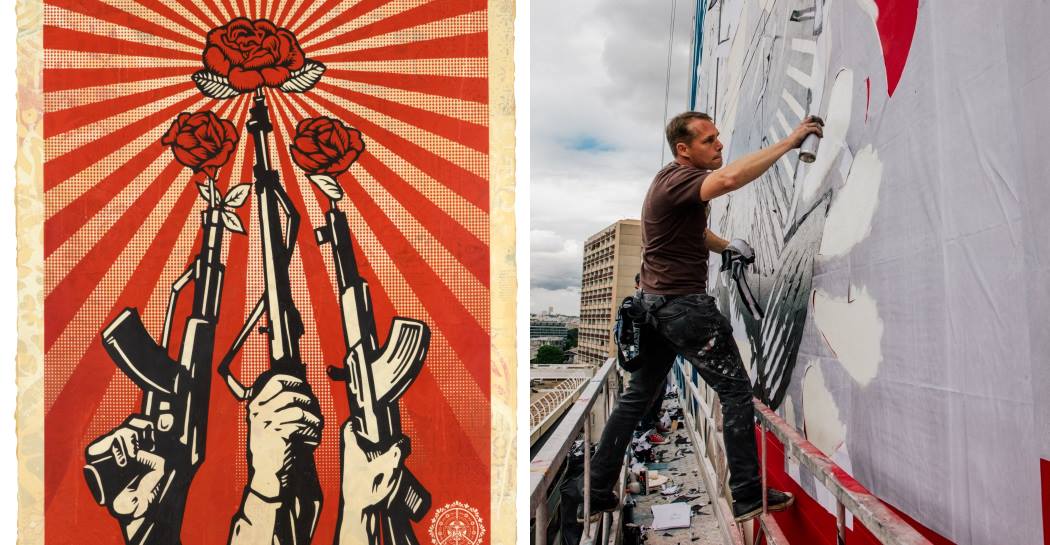
1008147
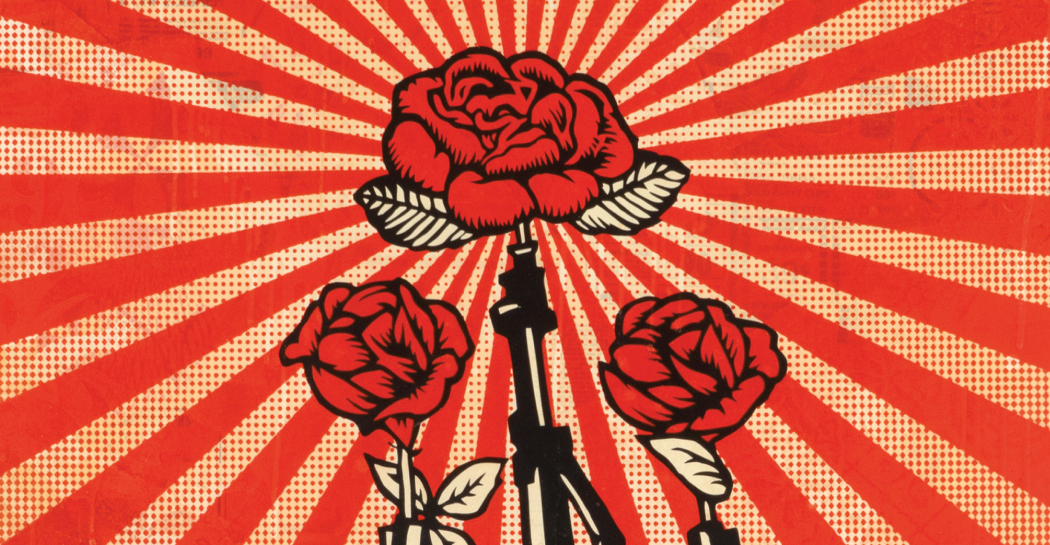
1007817
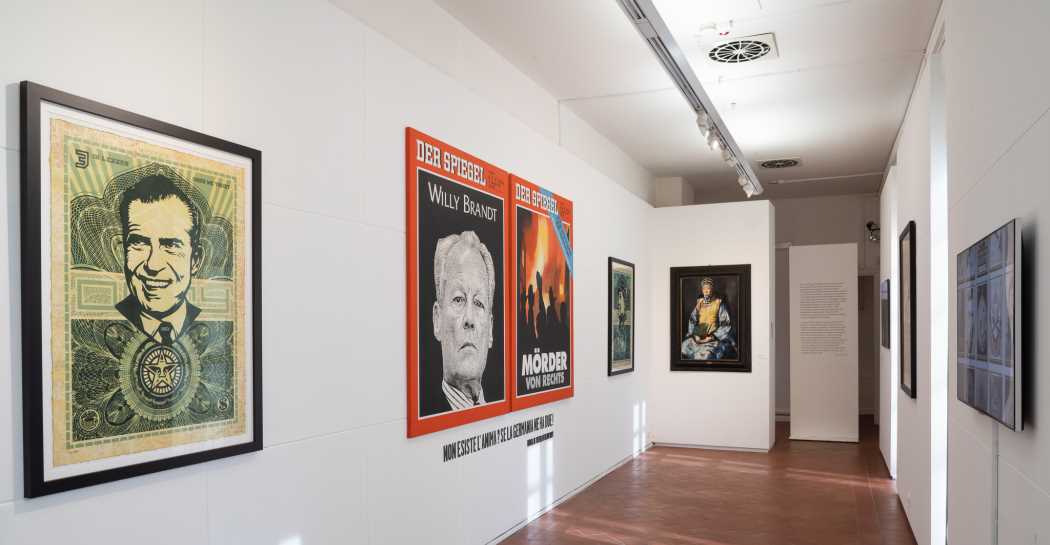
1007818
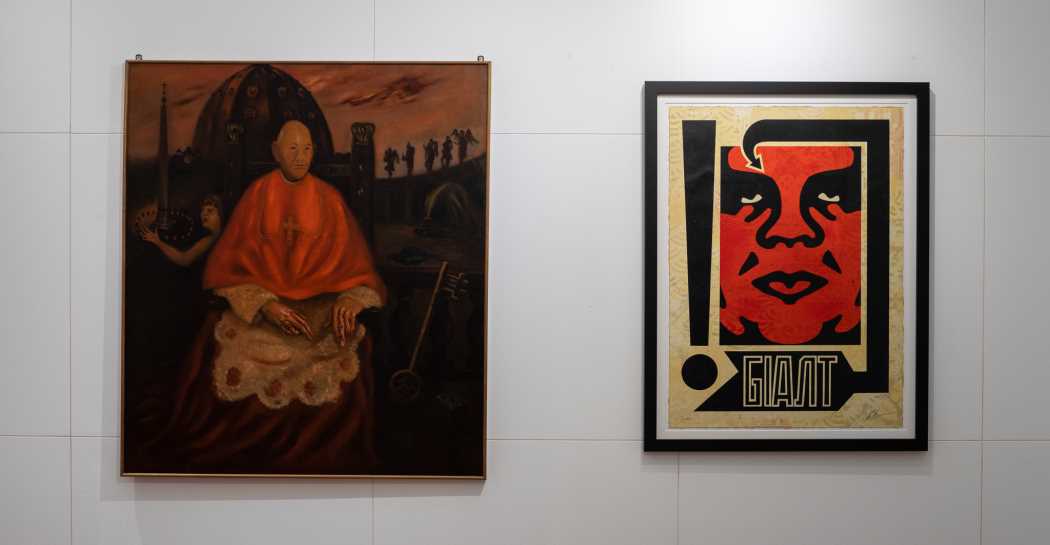
1007715

1007040
